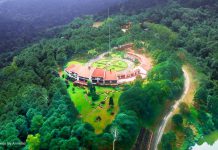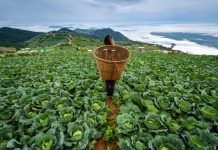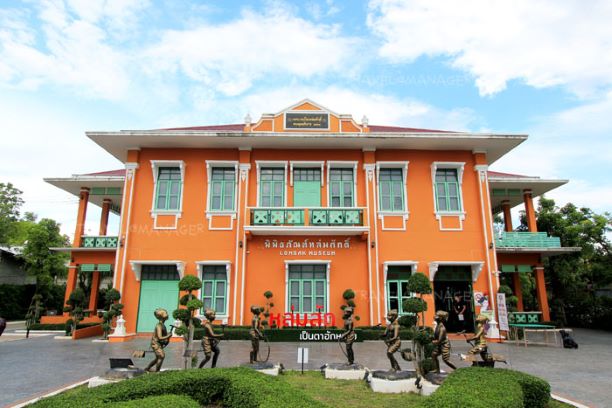
Lomsak Museum, the pride of the Tai Lom region
Phetchabun, although it is not the leading-famous destination towards foreign tourists. This beautiful province is not less in its interesting and fascinating charm as another tourist destination where the region is rich in its tourism resource; archeological site, temple, national park, waterfall, and agricultural plantation. Besides the famous tourist spots which are top-ranking wish-list among the tourists, such as Khao Kho, Phu Thap Burk, Nam Nao National Park, or Wat Phra That Pha Sorn Kaew, Phetchabun also another historic attraction that would be thrilled for the tourist to discover like “Lomsak Museum.” This museum displays the story of life, culture, tradition, native wisdom, and belief of Lomsak people since the early days. So, it is an impressive local learning center that you should not miss from the trip, indeed.
About the place
Located in Lom Sak district, Lomsak Museum is where the site collects the history, incidents, stories, and life of “Lom Sak Region,” an old central city with a long history of Phetchabun, and presents to the next generation and other interesting people to see with not let them go through the time.
What to see at the Lomsak Museum
Every partition within the 2-story Colonial style architecture is as if the reception hall to welcome all the guests of Lom Sak Town. Remarkably, all displays in the museum project the identity of Lom Sak citizen very well in every aspect that interior allocated into 10 partitions which are by following;
1. Information
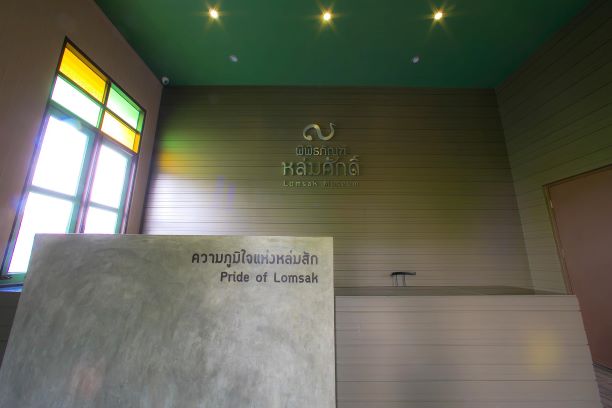
The first part which all visitors will check in once you arrived at Lomsak Museum. A small room is the first stop for the visitors getting to know better about the city of Lom Sak. Inside is the floor plan to show the position and briefly detail of all 10 exhibition rooms together with the receptionists providing the visitors with information. Specifically, those staff will be in the traditional costume on every Saturday that looks lovely towards the eyes of beholders, indeed.
2. Theater Room
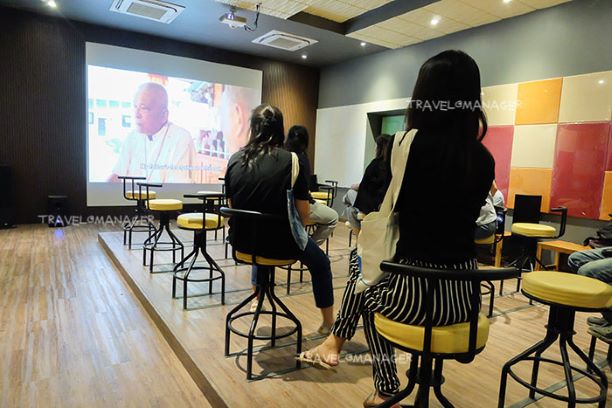
When you step into this room, similarly you flashback to the past to see the “Lom Sak City” in the old days. Theater Room features a short film on the cinema screen with the unique technique of the “turn around” seats and projectors set at the front and the back of the audiences. Consequently, enhancing the flavor to watch the film since it seems like we sit amidst the characters in the movie.
3. Lom Sak in the Past Room
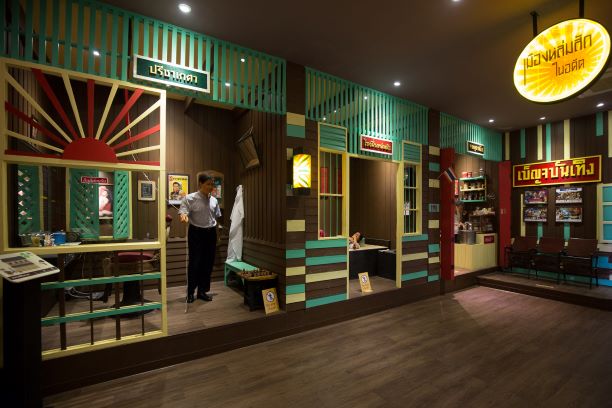
The room set up to the model of Lom Sak City in the past, whether shops, restaurants or any other important sights up to 9 places for the visitors to see and learn, including Mr. Preecha Khayaeng’s Barber, Lom Sak Opium Den, Mui Li Coffee Shop (Granny Kham Muan’s Shop). Also, Benja Bantheong Cinema, Pond, Water from the sand dune, Lom Sak Clock Tower, the Concrete Pole to remembrance the creation of Mitraphab Road route Phitsanulok – Lom Sak, and Sak Wittayakarn School.
4. The Man of Lom Sak Room
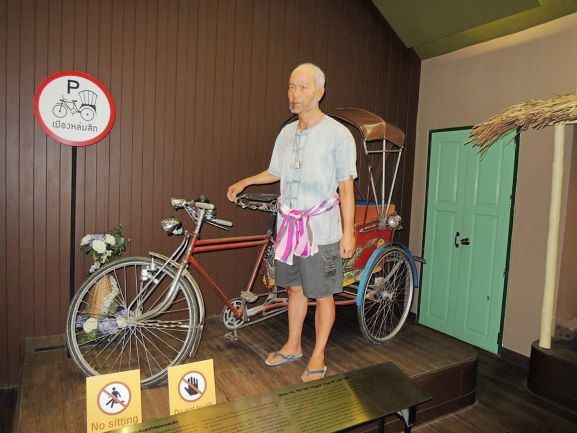
Apart from the beauty of the architectural design of the buildings and delicious food, another charm of this remarkable town is the occupation of the citizen here. And that presented inside the Lomsak Museum in “The Man of Lom Sak Room” that offers 2 significant professionals of the local which are trishaw men and bladesmith.
The former, presenting through the story of “Uncle Yai,” the last trishaw man who currently still lives his life with this rickshaw service in the area of Tai Lom Walking Street even he’s 60s years old now.
The latter, showing the significant bladesmith community called “Ban Mai Ancient Bladesmith Group.” This village has a background and came from Vientiane in Laos. The blade or knife product from this village is distinctive since it shaped from “leaf spring” and each piece of blade engraved the name of bladesmith who made it, too. Nowadays, we can see local life with this occupation.
5. Lom Sak Gallery Room
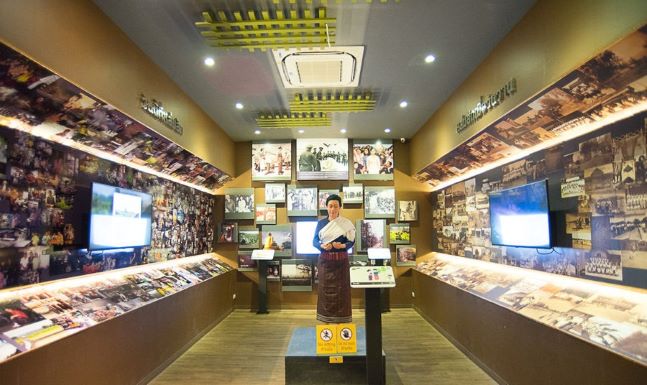
So-called the section that collected all the precious memoirs of Lom Sak since now and then. The exhibition displays on the picture wall, the left side is “Today at Lom Sak” and “Lom Sak in the early days” is on the right wall. The presentation compares the progress of the region in various things, such as edifice, costume, and the way of life.
More than that, the room also features the royal duties of HM King Bhumibol (King Rama IX) and member of the royal family when visited Lom Sak district in Phetchabun. That always the pride of Lom Sak people from that time on. Additionally, in the center of the room is a wax model of Tai Lom lady in traditional dress and updo hair, which is the significant identity of the costume of Tai Lom women in the past.
6. Lom Sak Government Room
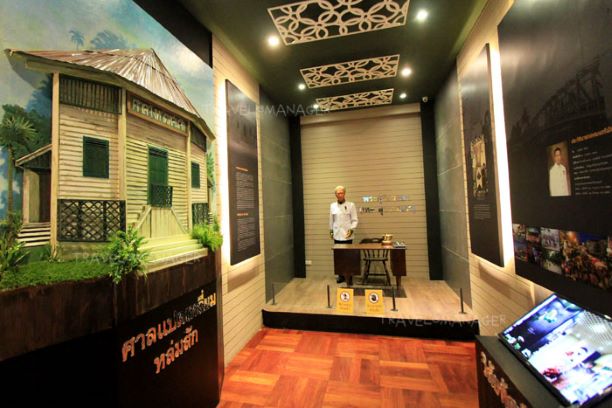
The area tells the story regarding political administration and government of Lom Sak City in the time that the region was under control by “City Ruler.” The magnificent presentation of a wax model of Lom Sak Ruler named “Phra Suriyawongsa” (Thet Suwannapha) in real size. The model is in traditional dress for the ruler in the past, as well as the reproduction of the octagon pavilion that used as the town hall in the early days, too.
7. Lan Chang’s Cultural Room
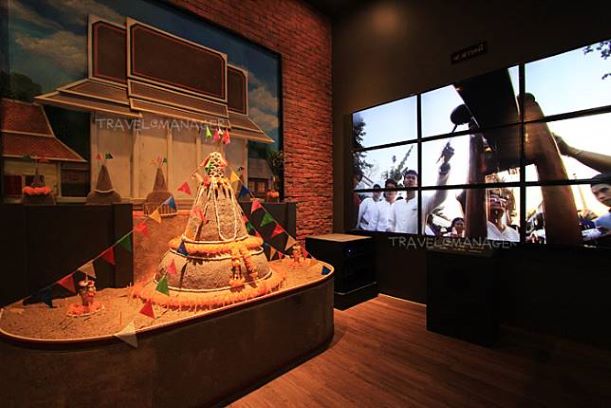
Story of the way of life, custom, and culture of Tai Lom people that considered are very fascinating and exotic, indeed. Inside the room features many local traditions of Tai Lom that you would be exciting, such as the tradition of making “Madhupayas Rice” (the Buddhist rice porridge), the culture of the wax castle procession, the tradition of floating the lantern bowl. More than that, the display of dwelling of Tai Lom in the past that is the two stories wooden house with gable roof as same as Thai architecture in general. Significantly, the structure is lifted basement which providing the space for multi-purpose using of Tai Lom People that spend most of the day to do things at the area under the house; also it is protected from termite by supported of stones instead of digging the hole and implant pillars into the ground.
Additionally, the mural painting of Tai Lom called “Hoop Tam,” which is the mural painting on the wall inside the ordination hall with the native technique to use fingers tinge the picture instead of a brush. The distinctive piece of art created by the imagination of the artist that modeled from the mural painting at Wat Sisaket in Ban Sok sub-district. The pictures are work of four local artists who resided in the neighbor, however, presently there’s only one who still alive named “Uncle Pleong Kaeokham” with the age of 78 years continuing to tell the precious story of this community via the magnificent local art.
8. Thai Lom Room

Tai Lom so-called the people descended from Laos which origin in Lan Xang, Luang Pra Bang and south to the Lom Town in Phetchabun province. Significantly, a male ancestor of Tai Lom, in the old days was favorite to tattoo from the knee up to groin in order to get attraction from the women. However, the belly part that is clean from the tattoo resulted in calling “White Belly Laos.” And there’s the last white belly Laos in the community named “Grandpa Gian Khamniam” or “Soan Lian” whose 104 years old (recorded on September 2015.
Whereas, Tai Lom ladies in the past were called “Red Laos Skirt Fabric,” which referred to the traditional style of skirt fabric. The Red Laos Skirt Fabric is unique, and also the remarkable identity of Tai Lom community, precious heritage for the next generation should conserve, indeed. Nowadays, a Tai Lom lady who lives in 90 years of age called “Pan Marod.” In Thai Lon Room, therefore the wax models of the white belly Laos and the lady in the red Laos skirt fabric in the actual size set up for the visitors to experience.
9. Lom Sak Cuisine Room

The section to display local food of Tai Lom and many recommended delicious dishes. Those of plates, although the artificial ones look very attractive and mouth-watering. The food including “Miang Khon” (traditional style leaf wrap appetizer), “Namprik Khee Pu” (crab chili dip), “Soup Bai Mamuang” (spicy mango leaf salad), “Khao Niew Hua Ngork” (steamed sticky rice with coconut milk), for instance. Also, many local dishes that are not only tasty but filled with an interesting story behind, such as Nom Sen Tai Lom (rice vermicelli with sauce), Sai Krok Tarn Diew (grilled northern-style sausage), or Je Gia’s Fried meatball, for example.
10. Lom Sak Folkways Room
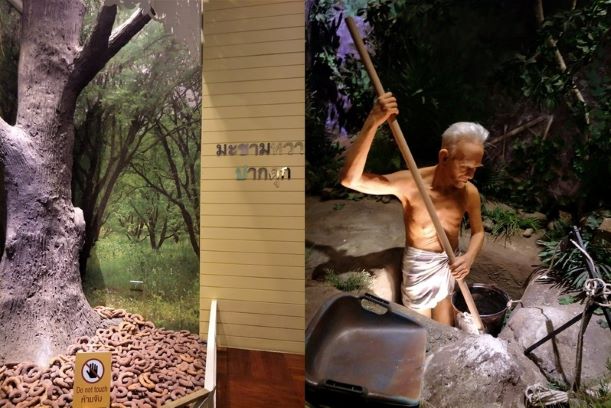
The model presents the livelihood of Tai Lom residents, including “gold panning” at Lom Sak Gold Mine in Nam Ko sub-district that better known among the locals “Nam Ko Bo Kham” (Bo Kham in local means gold mine). The villagers do gold panning by using iron pan; however, productivity is very rare, which is only 15.16 grams per annum only.
Besides, in the room also features “the legend of sweet tamarind of Lom City” that is “sweet tamarind Pak Duk.” This significant tamarind is a big tree with dense leaves and branches bend down to reach almost to the ground. We can pick tamarind pod by hand and taste the sweet and fragrant meat in the golden yellow color. The Pak Duk tamarind pod is different from the Phetchabun breed that the former is flat and slightly curvy like sword shape, while the latter is bigger pod with curvy.
Apart from the story presented the Pak Duk Tamarind at the museum, once, any of whom interesting to see the real one can visit and see the first and only Pak Duk Tamarind tree at the house of “Uncle Pet Duangjan” in Pak Duk sub-district, Lom Sak district. Unfortunately, the tree, currently dead and does not propagate the species, resulted in it’s impossible to taste it. It said that the taste of Pak Duk Tamarind is similar to “Pragaithong Sweet Tamarind” that is one of the top famous sweet tamarinds of Phetchabun.
Tourist Information
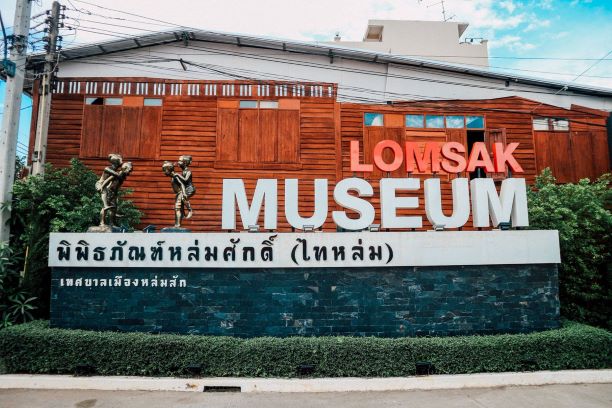
“Lomsak Museum” operates every Wednesday to Friday, scheduled four times a day which including;
- First-round at 9.00am – 10.00am
- The second round at 10.30am – 11.30am
- The third round at 1.30pm – 2.30pm
- Forth round at 3.00p – 4.00pm
And on Saturday between 5.00pm and 9.00pm (no specific timetable for the tour). The museum closed on Sunday, Monday, Tuesday, and public holidays. The place opens to the tourists with free of charge.


